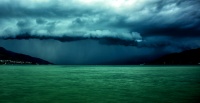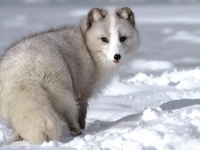More actions
mNo edit summary |
|||
| Line 32: | Line 32: | ||
=== Climate=== | === Climate=== | ||
[[Image:Efros.jpg|200px|thumb|left|Æbrynya Bay]] | |||
Efros Delta's climate is arctic, with planet-wide snow and ice storms occurring during all seasons. The planet is in the final stages of a prolonged Ice Age, and as a result, the sea levels are rising and the temperate zone straddling the equator is slowly expanding. | Efros Delta's climate is arctic, with planet-wide snow and ice storms occurring during all seasons. The planet is in the final stages of a prolonged Ice Age, and as a result, the sea levels are rising and the temperate zone straddling the equator is slowly expanding. | ||
| Line 50: | Line 52: | ||
===Flora=== | ===Flora=== | ||
[[Image:Efrosian Orchid.jpg|200px|thumb|right|Valkea Orchid]] | |||
Efros is home to a surprisingly large variety of conifer trees, along with a dazzling array of wildflowers, moss, ferns and hardy grass. As the climate slowly changes even formerly rare plants such as the pretty Efrosian orchids and the highly prized night-blooming Hu-Sharayh become more common. | Efros is home to a surprisingly large variety of conifer trees, along with a dazzling array of wildflowers, moss, ferns and hardy grass. As the climate slowly changes even formerly rare plants such as the pretty Efrosian orchids and the highly prized night-blooming Hu-Sharayh become more common. | ||
Revision as of 12:01, 13 November 2015
Efros, also known as Efros Delta, is the fourth planet in the Flarset system and homeworld of the humanoid Efrosians, a member of the United Federation of Planets.
About the Planet

- Position in system: IV
- Number Of Satellites: 2 (Hrán and Aurvanðæ)
- Equatorial Circumference: 45,000 km
- Total Surface Area: 642,400,000 sq. km
- Percentage Land Mass: 36%
- Total Land Mass: 231,000,000 sq. km
Climate

Efros Delta's climate is arctic, with planet-wide snow and ice storms occurring during all seasons. The planet is in the final stages of a prolonged Ice Age, and as a result, the sea levels are rising and the temperate zone straddling the equator is slowly expanding.
The average maximum/minimum temperatures in the habitable temperate zone vary between coastal climates with milder, longer summers and regular precipitation and the more arid, sub-arctic climate of the inner continents.
This most densely populated region is heavily forested and enjoys pleasant springs and crisp autumns.
Efrosian cities are heated by geothermal energy, built to not only fit seamlessly into the landscape, but also to offer as little resistance as possible to the perpetual storms.
Winters are cold and long, and in the subarctic zones they can be brutal. In the central interior provinces the daily average temps (in winter) are near 5°F, with daily lows near -20°F; significantly lower on occasion.
In these regions, snow can cover the ground almost 10 months of the year, while in the outer regions eleven months of snow cover is the norm.
Some islands in the Southern hemisphere enjoy warmer temperatures due to mild ocean currents and volcanic activity.
Flora
Efros is home to a surprisingly large variety of conifer trees, along with a dazzling array of wildflowers, moss, ferns and hardy grass. As the climate slowly changes even formerly rare plants such as the pretty Efrosian orchids and the highly prized night-blooming Hu-Sharayh become more common.
Outside the temperate zone the vegetation mostly consists of a few hardy types of moss and lichen, along with the occasional thorny shrub and windblown fir-tree.
- Hu-Sharayh - a night-blooming flower with subtle, spicy scent and white-blue petals. The leaves are used to brew aromatic teas, while the petals are used to produce soaps and perfumes.
- Kalhvhego - a small orchid, found only in the warmest regions of the temperate zone. Colors can vary from deep burgundy red to bright apricot. The roots have numerous medical applications.
- Rondhanë - a pine-cone like nut, favored by treebears. Also used in cakes and traditional holiday sweetbreads. The Rondhan tree's sap is also used to produce a sweet, spicy sirup (similar to terran maple syrup, though with a more smoky aroma)
- Levithi - small, almost shrub-like trees that grow abundant wherever the temperatures allow them to take root. Levithi nuts are a basic Efrosian food staple, the essential oils are a vital part of Efrosian diet.
- Dovrefjåyy - the most common tree on Efros. Fir-like with sturdy, fragrant wood used for furniture and construction.
- Mjeynnð - a melon-like plant with violet fruits. The wild, smaller variety is called Mjey-ahnnð and is mostly found in mountain regions. Fermented, Mjey-ahnnð makes a light, sparkly wine. The raw fruits are very popular with children.
Fauna
Efros Delta is a harsh environment. Consequently there is not as rich a mammal presence as on many other worlds. However, the oceans are rich in nutrients and support a great deal of life. Rivers and lakes in the temperate zone are home to many varieties of fish and crustaceans.

- Mjennhy - (treebear) - brown and white furred omnivore, rather like a large, fluffy koala
- Skaðrii - (silverdeer) - migratory grazing animals with soft, thick fur and small antlers.
- Hrællas - (moonhawk) - predatory bird with silver-grey feathers that tends to hunt at dusk.
- Vithuu - (firebull) - large, rust-colored herbivores that graze in the tundras and travel in herds of up to 100 animals. Vaguely resembling a cross between buffaloes and caribou, Vithuu are raised as livestock. Very fond of melons.
- Mrenh Alfëh - (Blue Sable) - small predatory animal that lives in burrows.
- Myaval - a type of clams. Popular seafood in coastal regions.
- Eh'yarae - giant, blue-grey crabs. Mostly found in slow-moving rivers.
- Gleðy-ulfr - tiny fox-like predator, mostly found in tundras and mountains. Sometimes kept as a pet.

